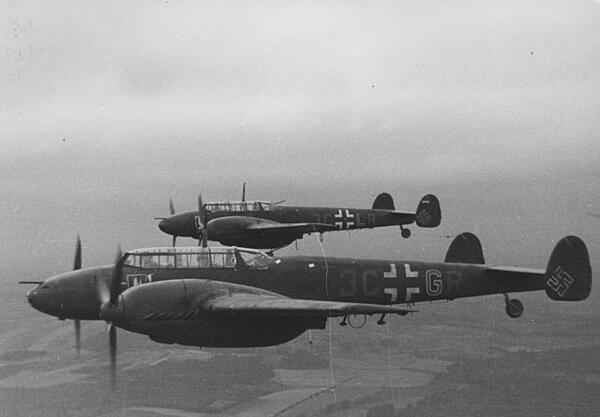Messerschmitt 110
Originally the Messerschmitt 110 was designed to be a twin engine fighter, capable of offensive and defensive roles. The Messerschmitt’s first flight took place in May 1936, and by August 1939 the Luftwaffe had a fleet of 159 for the blitzkrieg attack on Poland.
The 110 was designed as a long-range fighter to cut a path for bombers through the defending aircraft, and because of its defense it had to deny access to ‘friendly’ airspace to enemy bombers.
The Messerschmitt 110 had to fight head on with single engine fighters during the Battle of Britain, showing its vulnerability. Even though the 109 was able to stand up to the Spitfires and Hurricanes, the 110 couldn’t as it did not have the same manoeuvrability of both the main RAF fighter planes, and proved to be a larger target. Hurricanes and Spitfires attacking from the rear had an easy target as the 110 only had one rear firing machine gun. In August 1940, 120 Messerschmitt 110s were lost.

The 110 demonstrated its value to the Luftwaffe during the Polish campaign, but it was opposed against older fighters in the Polish Air Force. The 110’s additionally shot down nine RAF Wellington bombers out of 24 during a mission over the Heligoland Bight in December 1939. There were three other Wellingtons which did not return, and this granted the mission a failure rate of 50 per cent - viewed as a major blow to Bomber Command’s morale.
Since the 110 neglected to be seen as a fighter once the Battle of Britain was over, it was found roles of greater success such as a reconnaissance plane, fighter bomber and a night fighter. Altogether there were 6,050 Messerschmitt 110s built.
See also: Messerschmitt 109
MLA Citation/Reference
"Messerschmitt 110". HistoryLearning.com. 2025. Web.
